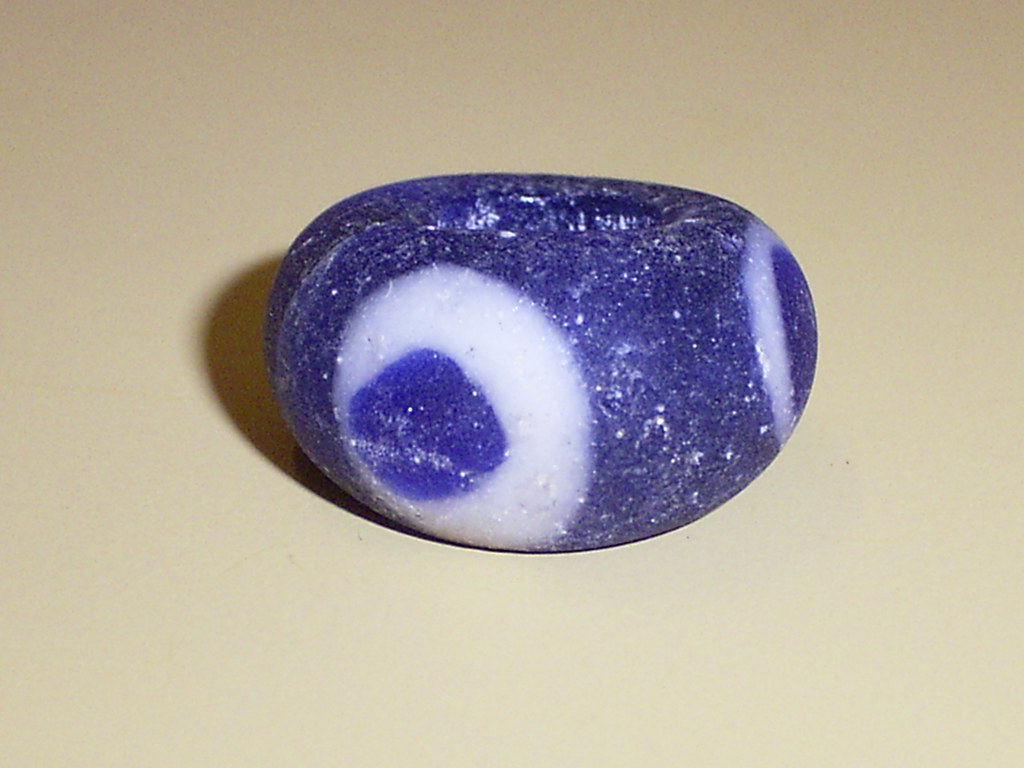If the evidence from early first millennium CE West Java discussed last week leaves no doubt that parts of the island were integrated into the larger regional maritime networks of the era, there was no unequivocal evidence of stuff from beyond India arriving in Java – there is a clear possibility that some of the artifacts discovered at Batujaya came from the Far West, but no direct proof. Yet over the course of the last two decades, more archaeological work has been done elsewhere in Indonesia, and most of these projects have equally been interested in the long-distance contacts between the Indonesian archipelago, Asia, and the rest of the ‘old’ world.
An interesting case is that of Sembiran and Pacung on Bali. Bali, of course, lies immediately east of Java, but in the larger scheme of things that means that it is further away from the main trans-Asian seafaring routes, and therefore, its integration in ‘global’ networks of exchange was a bit more complicated. To put it a bit more bluntly: while North-West Java is relatively well-connected to a variety of places simply because of its location, Bali had mostly one claim to fame, and that is that it was (roughly) en route to the Maluku Islands, where unique spices could be obtained, and one of the debates amongst scholars is how intensive this spice trade had become in the early first Millennium CE.
Some trade clearly was already going on: both in Han China, and in the Roman empire, people knew of the existence of cloves, which only grow in the Maluku Archipelago. Indeed, the first century CE Roman author Pliny is commonly thought to refer to the clove in his encyclopedia of nature, calling it a ‘grain resembling that of pepper, but larger and more brittle, which was imported to the Roman world ‘for the sake of its scent’ (Natural History, 12.30). Pliny, however, reported hearsay that the clove came from the ‘Indian lotus tree’ rather than from the Indonesian archipelago – Greco-Roman topographical knowledge beyond the Bay of Bengal was extremely sketchy.
Yet if products from the Maluku Islands could make it to the Greco-Roman world, then the reverse is also true, and Greco-Roman stuff might easily have ended up on the Maluku Islands, or in places along the way – such as Bali. The excavations in Sembiran and Pacung served to find out how coastal communities in Northern Bali interacted with the networks of trade that made this possible, and the excavators have analyzed a number of finds – grave goods – to understand these connections. Obviously, these included ceramics. As happened at Batujaya, there was a clear presence of Indian rouletted ware in layers that could be dated to around the start of the Christian era, but it also seems as if some Indian-looking pots were actually local imitations (suggesting that people liked this stuff, and wanted to replicate it).

More interestingly, however, the excavators also chemically analysed a whole set of glass beads – there were different traditions of glass-making in the ancient world, and the chemical components of glass can be used to understand, in very general terms, where it is coming from. Most beads came from mainland southeast Asia, several could be associated with India, but three beads, of which one from a firmly dated (early) context, were made of soda Natron glass, a tradition firmly (and only) associated with the Roman world – indeed, the natron used in the Roman world all came from Wadi-el-Natrun in Egypt. So here, one could say, we have a concrete and undisputable example of Roman stuff in the Far East from what in Greco-Roman terms counts as the ‘Early Imperial period’. Three beads, each of barely half a cm in size. It is not much. But it is definitely something.
Calo, A. et al. (2015) ‘Sembiran and Pacung on the north coast of Bali: a strategic crossroads for early trans-Asiatic exchange’ Antiquity 89: 378-396. doi: 10.15184/aqy.2014.45
Miko Flohr, 21/01/2020
